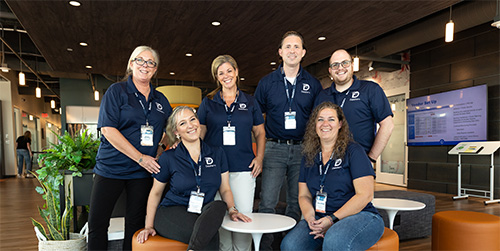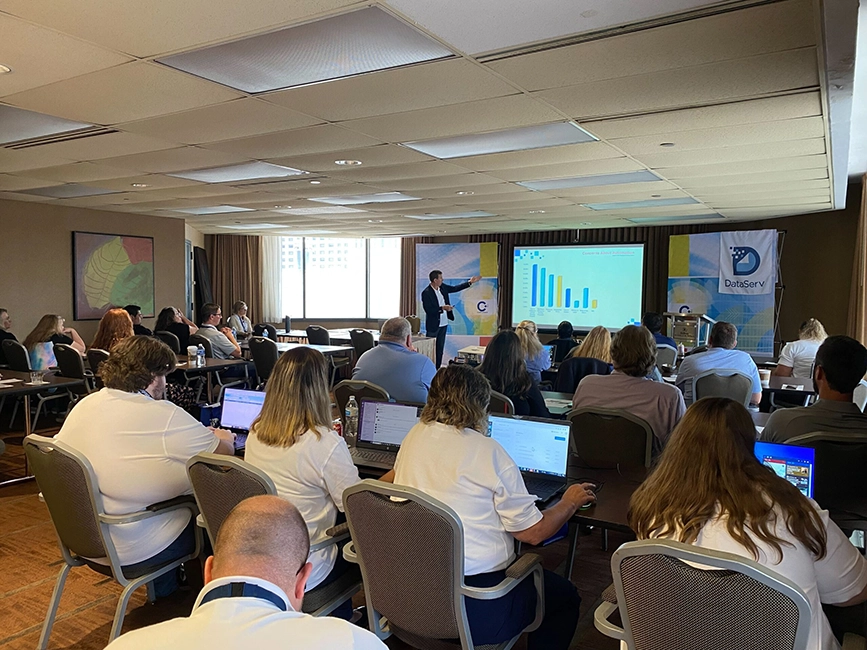Artificial Intelligence (AI) is a must when it comes to Accounts Payable automation! But not all AP automation partners are created equal.
“Artificial Intelligence” is broadly defined as “the theory and development of computer systems able to perform tasks that normally require human intelligence, such as visual perception, speech recognition, decision-making, and translation between languages.” By that definition, even calculators qualify as Artificial Intelligence.
RELATED CONTENT
Other resources you might find helpful:
Leveraging AI in AP Automation: Balancing Efficiency with Human Oversight
Many organizations have needed or have been leveraging AI before it was a commonly recognized acronym. In fact, any SaaS automation is, at its core, artificial intelligence, so it is one of the top tools for creating value for a finance and accounting team.
There have been some amazing developments in AI, some of which have been game-changing for SaaS automation. But AI has its limits. The example of a fatality involving Uber’s self-driving car reminds us to be cautious on the approach to artificial intelligence. It’s a game-changer for routine tasks, but it must recognize exceptions to the norm and leave those to the human in the driver’s seat.
AI can and should be used in the automation of financial processes. While some tasks need to be optimized for the best possible solution, which may take the judgment of a human, many tasks need to be maximized for the best fast solution, which is where AI shines. A computer cannot make good decisions about everything, but the more decisions you can safely delegate to AI, the more energy and focus you can give to things that have to be “perfect.”
Of course, you must be the one to decide what can be optimized and what must be perfect. That is why you should be in the driver’s seat when it comes to managing AP exceptions, to define your tolerances and triggers so the software knows what should be flagged as an exception. There are a few items to consider when you are comparing AP automation partners: their philosophy, their oversight, and their trust.
The Role of AI in AP Automation: Trust, Oversight, and Philosophy
Philosophy
Because philosophy drives process, before you ask about any prospective partner’s technical expertise with AI, it is important to understand their philosophy about delegating decisions to machines. For instance, we have two basic principles that form the foundation of our philosophy and approach to using AI.
- “Don’t get ahead of the technology”: Just because AI can perform tasks doesn’t mean it’s ready to make critical decisions. Ensure your partner emphasizes best practices and works with you to define exceptions, tolerances, and workflows before delegating tasks to machines.
- “Delegate, but don’t abdicate”: AI needs human oversight, similar to a safety driver in a self-driving car. AI should have human oversight to intervene when needed, ensuring proper control without neglecting responsibility.
Both your team and AI must have clear guidelines on when a human should take over. You should control the tolerances and exceptions, with the AI making recommendations and a human approving exceptions before proceeding. This ensures best practices, minimizing both machine and human errors.
Oversight
Oversight is the ease with which you can review the decisions made by the software and the decisions that are pending human judgment. When considering the amount of oversight your AP software gives you, you should consider the following:
- “Quick Assessments”: The AP automation dashboard should enable quick assessments of work and urgent tasks.
- “Intuitive Layout & Design”: The dashboard should be intuitive, letting you set thresholds and priorities to structure your time efficiently. Managers should have quick access to balance workloads and ensure accountability.
- “Provides Flexibility”: Mobile functionality ensures that oversight can be performed from anywhere, providing flexibility for users and managers.Trust
Trust
Ultimately, the success of any automation project comes down to the trust you and your teams can put in the technology. This has less to do with the AI’s dependability than with how well the people involved understand the decisions the AI is making. Make sure your AP automation partner has an emphasis on training and change management. By the end of the training, your team should be able to:
- Understand and have input into how the software makes decisions.
- Be comfortable with the software’s actions and recommendations.
- Have ready access to data and details involved in the process.
- Trusting the software increases collaboration with AI.
Without this trust and information, you’ll lack confidence in letting go of tasks, undermining the purpose of automation.
- The goal with AI is not to put software in charge of all your decisions. The goal is to:
- Minimize stress and maximize productivity by making it easier for you to adhere to best practices,
- Reduce human error
- Have more real-time access to your data; allowing your team to have the freedom to focus on the decisions only they can make.
An AP automation solution should be designed to make driving and navigating a whole lot easier while still leaving you firmly in the driver’s seat.





























